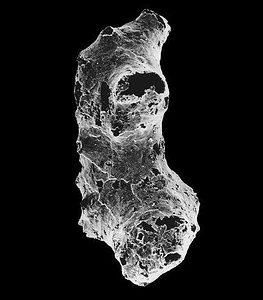
The origins of life is one of the biggest mysteries scientists have been trying to unravel for a very long time. While a lot of effort is being directed to finding alien life, it’s crucial, at least in my opinion, for us to understand how the first signs of life spurred on our own planet. There are a number of more or less accepted theories, that range from the primordial soup to alien bacteria brought to earth via asteroids and so on. Maybe we’ll never learn how life first flourished on this paradise surrounded by the infinite darkness of space we like to call Earth, since such an event might have forever been lost, leaving no trace.
It’s amazing, however, the kind of things we can trace back though. Scientists for instance have recently discovered, what they claim is, the oldest animal on Earth, uncovered so far. Dubbed, Otavia antiqua, this primitive life form was found in a 760-million-year-old rock in Namibia, Africa. There, scientists discovered hundreds of such fossils, the size of a grain of sand, and with sponge-like appearance.
These microscopic creatures are now considered the oldest animals in the world, since the previous holder, another primitive sponge, was dated to about 650 million years ago. It’s important to understand that any organism with cells differentiated into tissues and organs, such as the Otavia a., are considered animals. Actually, Otavia a. might actually be the ancestors to all modern animals on Earth today .
The researchers who discovered the ancient animal also made a small background description of it. It most likely lived in calm waters, including lagoons and other shallow environments and most likely fed on algae and bacteria, which the animal drew through pores on its tubelike body into a central space. The digestion occurred directly into the animal’s cells.
Fossil records indicate that Octavia remarkably went through several snowball Earth events, times when the planet was almost entirely covered in ice. Analyzing fossil samples from the oldest to the earliest, the researchers observed that roughly for 200 million years the Octavia didn’t evolve one bit, all sharing the same quasi-ovid form, with large openings leading from the exterior.
The findings were reported in the South African Journal of Science.
[source]






